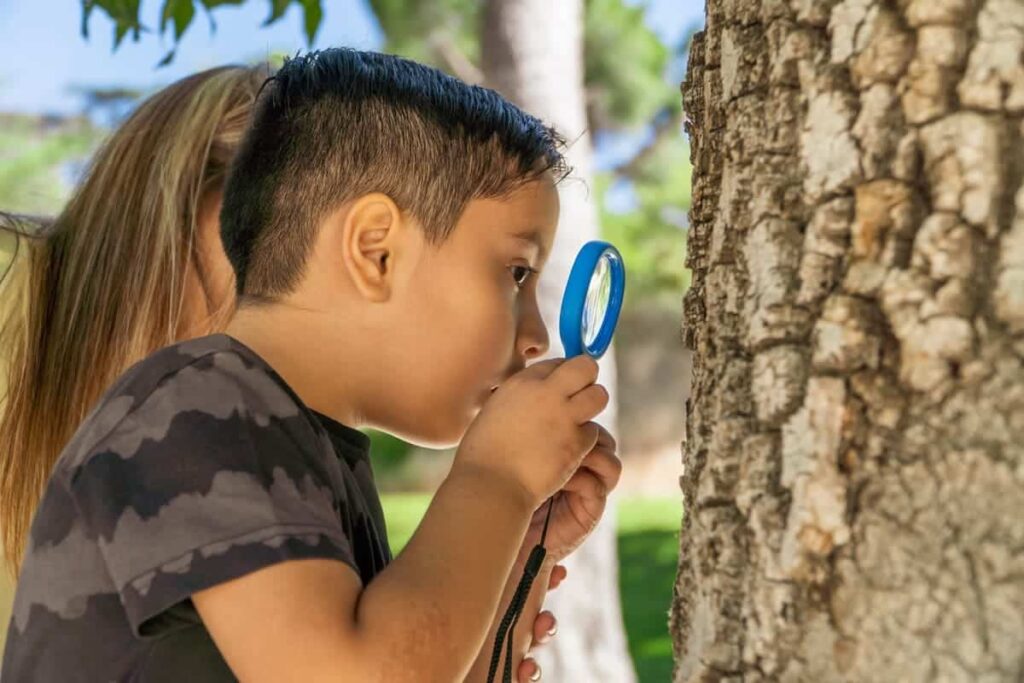
Today, we’ll help you identify bugs that kill trees. These tiny insects are very destructive, so we’ll mention proven prevention strategies for protecting your trees.
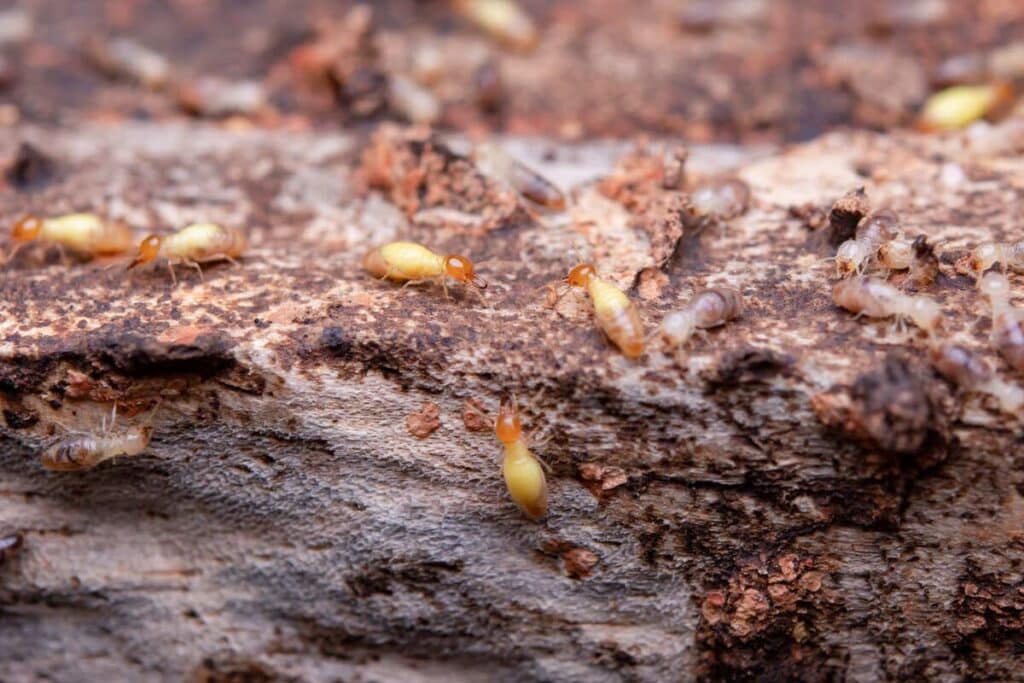
These tiny insects can cause tree diseases like:
Thus, you must take action when you see one of these bugs that kill trees in New Jersey:
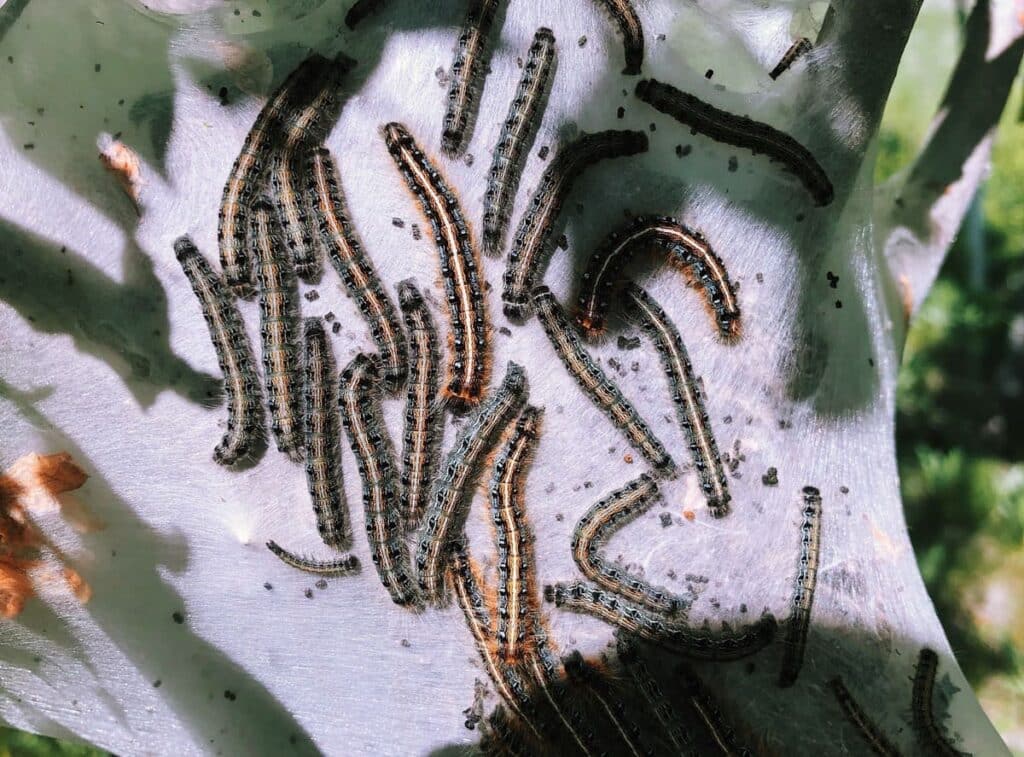
The forest tent caterpillar has white spots down the back instead of the solid white stripe on the eastern tent caterpillar.
The forest tent caterpillars don’t make tents and prefer oak and other shade trees to wild cherry. The life cycle is similar to the eastern tent caterpillar.
The eastern tent caterpillar, also known as the lappet moth, belongs to the Lasiocampidae family. It is normal to find it in oak, poplar, maple, or birch woods, where it may be a deadly pest. They like to nibble on shade and fruit trees like cherry, apple, and crabapple.
When tiny caterpillars have not caused severe tree defoliation, you can control them with insecticide.
One preventive way is by having a welcoming environment for birds and using insecticide to kill caterpillars without causing any harm to your trees, your landscape, or even other animals that can visit your property.
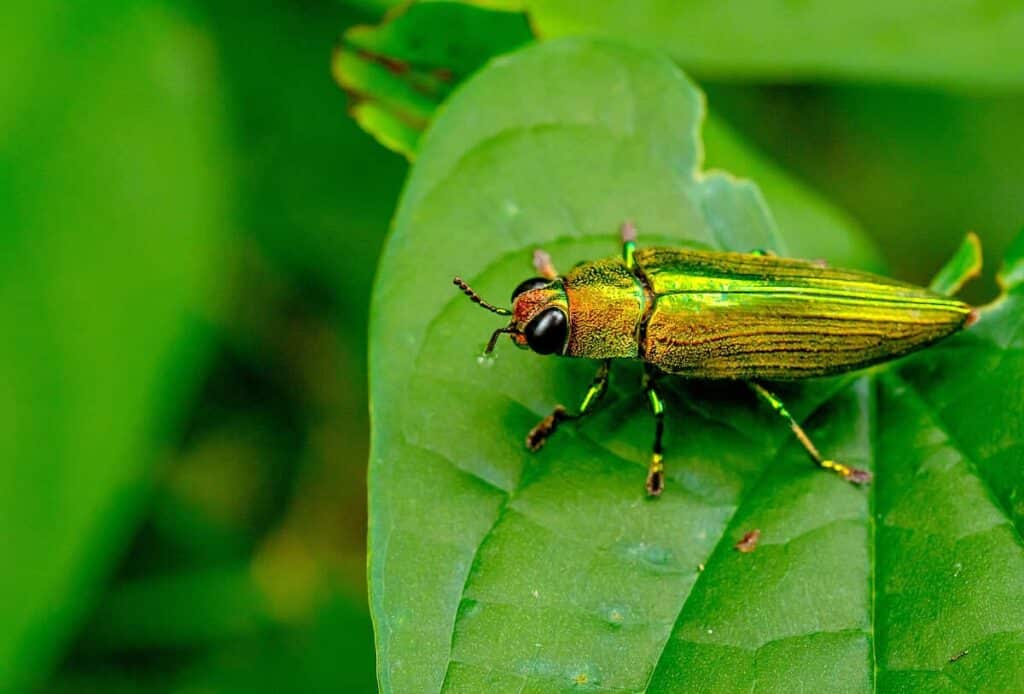
The emerald ash borer, known by the acronym EAB, is invasive and highly destructive. These tree-killing bugs are from the green buprestid or jewel beetles family native to northeastern Asia that feed on ash trees.
Females lay eggs in bark crevices on ash trees, and larvae feed underneath the bark of ash trees to emerge as adults in one to two years.
Local governments in North America are attempting to control it by monitoring its spread, diversifying tree species, and using insecticides and biological control.
Their metallic green and bronze colors make them beautiful insects. But these elongated bugs usually feed on the bark and eventually kill trees. In most cases, damaged trees lose their limbs and then fall.
One of the significant signs of emerald ash borer infestation is the yellow or white color of ash trees; other symptoms include tree suckers, bark tunneling, and splitting bark.
If you suspect you have an infested tree, you should burn any remaining firewood after the pruning practice and before springtime to help eliminate the possibility of the borer spreading.
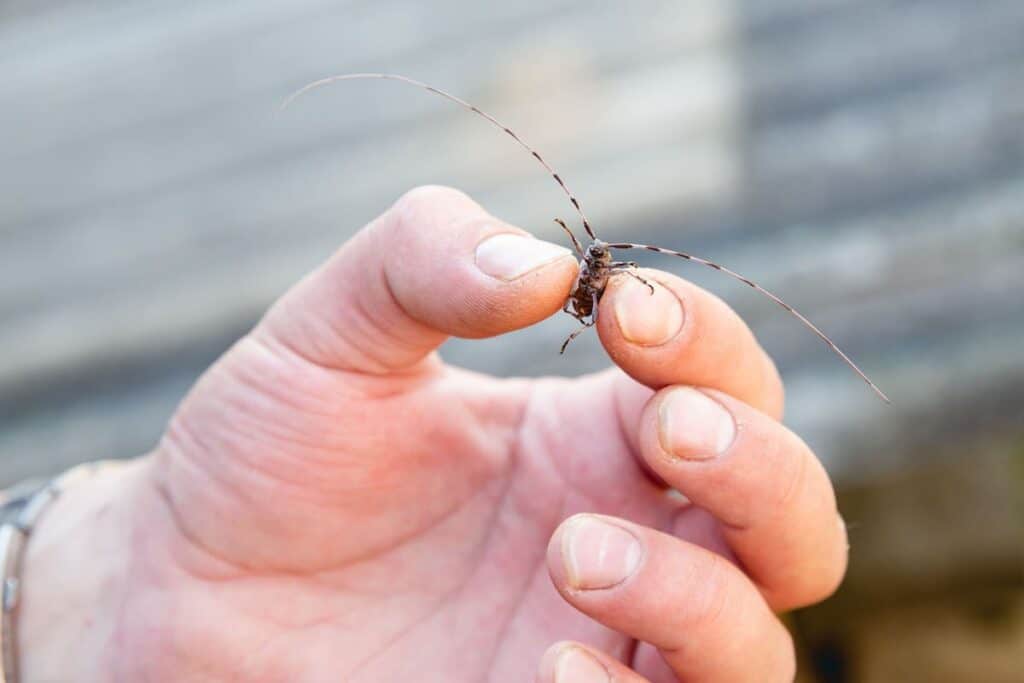
This Korean bug destroys America’s hardwood trees. Also known as the starry sky, sky beetle, or ALB, it feeds on various hardwoods, including maple, birch, elm, ash, poplar, horse-chestnut, and willow.
They have shiny black and white eye-catching antennae that can be twice as long as their body.
Trees attacked by these killer bugs often have wilted foliage and canopy dieback, but the main signs to look for include:
When having this tree pest, it’s best to call a professional to take care of it.
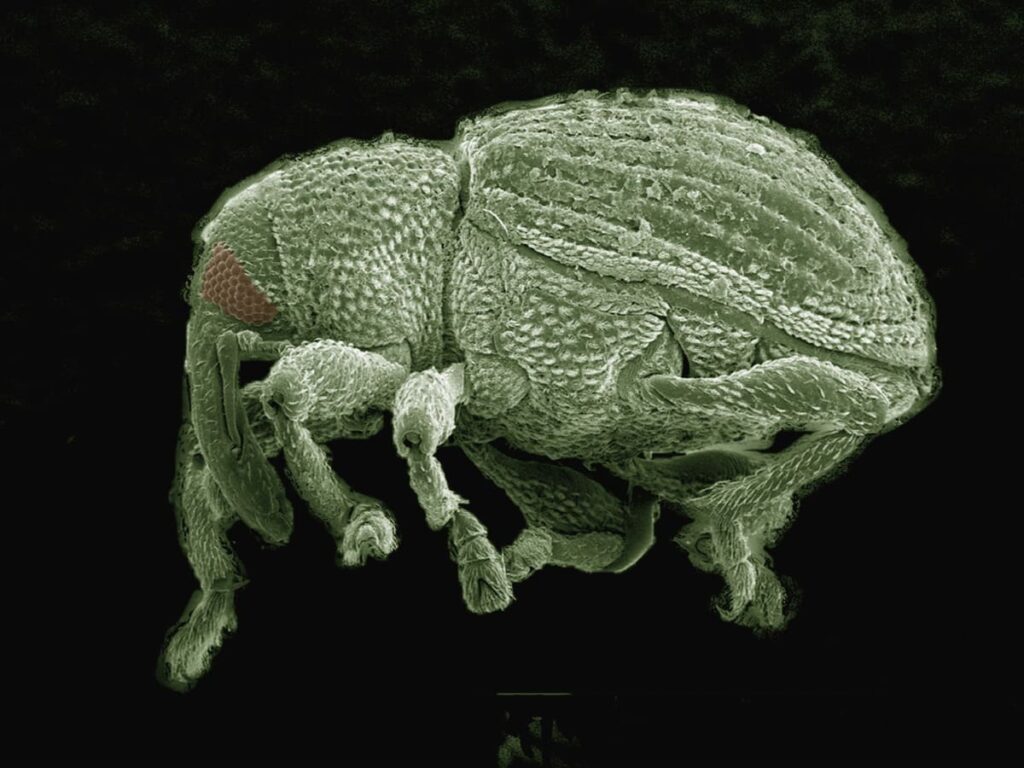
Ips is a genus of bark beetles in the family Curculionidae. It is distributed throughout the Northern Hemisphere, with some introduced species in Australia and Africa.
Sometimes known as “engraver beetles,” they are bark beetles that damage pine and spruce trees.
These tree-boring insects have a black to reddish-brown appearance with a recessed area on their backs.
Some signs include discoloration of your tree, H-shaped tunnels under the bark, and the sudden appearance of woodpeckers around your tree.
You can prevent infestation by taking good care of your trees through pruning and being mindful of where you place your freshly cut logs.
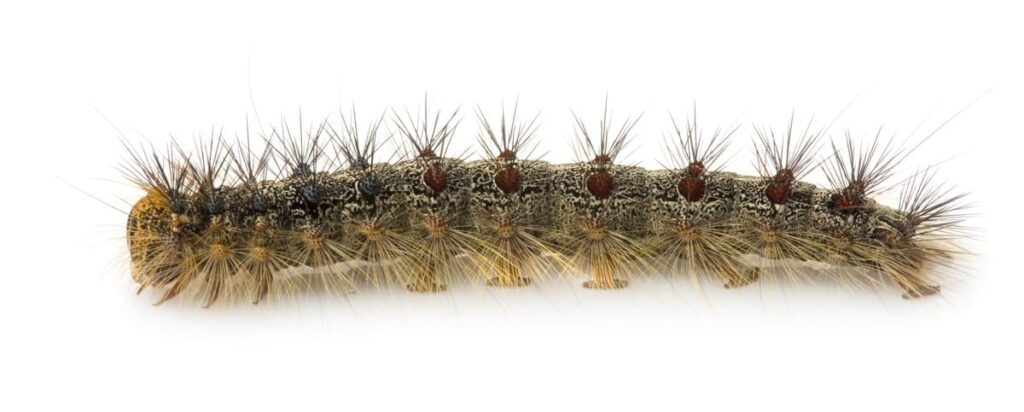
The caterpillars of the gypsy moth (Lymantria dispar) are a common defoliator of a wide range of broadleaved trees and shrubs.
The gypsy moth is native to parts of continental Europe, where populations periodically reach high numbers.
They feed on the leaves of various broadleaved tree and shrub species, showing a preference for oaks and poplars.
Gypsy moths also feed on small trees and shrubs in gardens, including ornamental conifers and beech hedges, which are frequent targets.
Eggs are the most visible way to identify this pest.
You can combat these bugs that destroy trees by adequately fertilizing, pruning, and watering. Also, you should check your tree around springtime to see if any eggs are lying around the trunk and remove them..
Oh, the pesky Gold Spotted Oak Borer (GSOB), a beetle that’s been turning majestic oaks into mere shadows of themselves, especially in residential areas!
Originating from Arizona, this little critter has a particular taste for oak trees, which has caused widespread concern among homeowners and environmentalists.
The beetle targets weakened or stressed oaks, burrowing into their bark and disrupting the tree’s ability to transport water and nutrients. This often leads to the tree’s premature death, transforming once lush landscapes into dreary scenes.
Oaks are greatly affected in residential areas, as they have immense aesthetic and environmental benefits. From providing shade and cooling properties to being a critical part of the local ecosystem, the loss of these trees can significantly impact property values and local wildlife.
In fact, you can learn more about the environmental and cultural importance of oaks in our recent article.
Moreover, the spread of GSOB is challenging to control due to its inconspicuous nature and the difficulty of detecting infestations early. Homeowners are urged to look for signs of distress in their oaks, such as thinning canopies, D-shaped exit holes, and increased woodpecker activity, as these could indicate the presence of this unwelcome visitor.
The oak longhorn borer is a fast-moving beetle with a metallic appearance, flat thorax, and short antennae. It creates curving tunnels that destroy phloem, causing bark destruction and wood turning black.
This pest makes curving tunnels destroying phloem and presenting these evident damages:
This oak borer beetle can cause severe damage; the clue is to treat the tree disease before the end of its lifecycle:
“As a bonus, here we offer our complete Oak Tree Borers Treatment DIY.”
Bugs tunnel the inner bark layer of a tree, disrupting the distribution of nutrients and water throughout the tree.
The tiny insects eat the leaves, stopping the photosynthesis process, which is vital in producing the energy needed for the tree to survive.
Once in trees, they introduce disease organisms that can severely damage or even kill the entire tree.
You need to focus on each beetle to stop its spread. We hope you enjoyed this article, which will help you make the proper practices to avoid these bugs climbing to your trees and killing them.